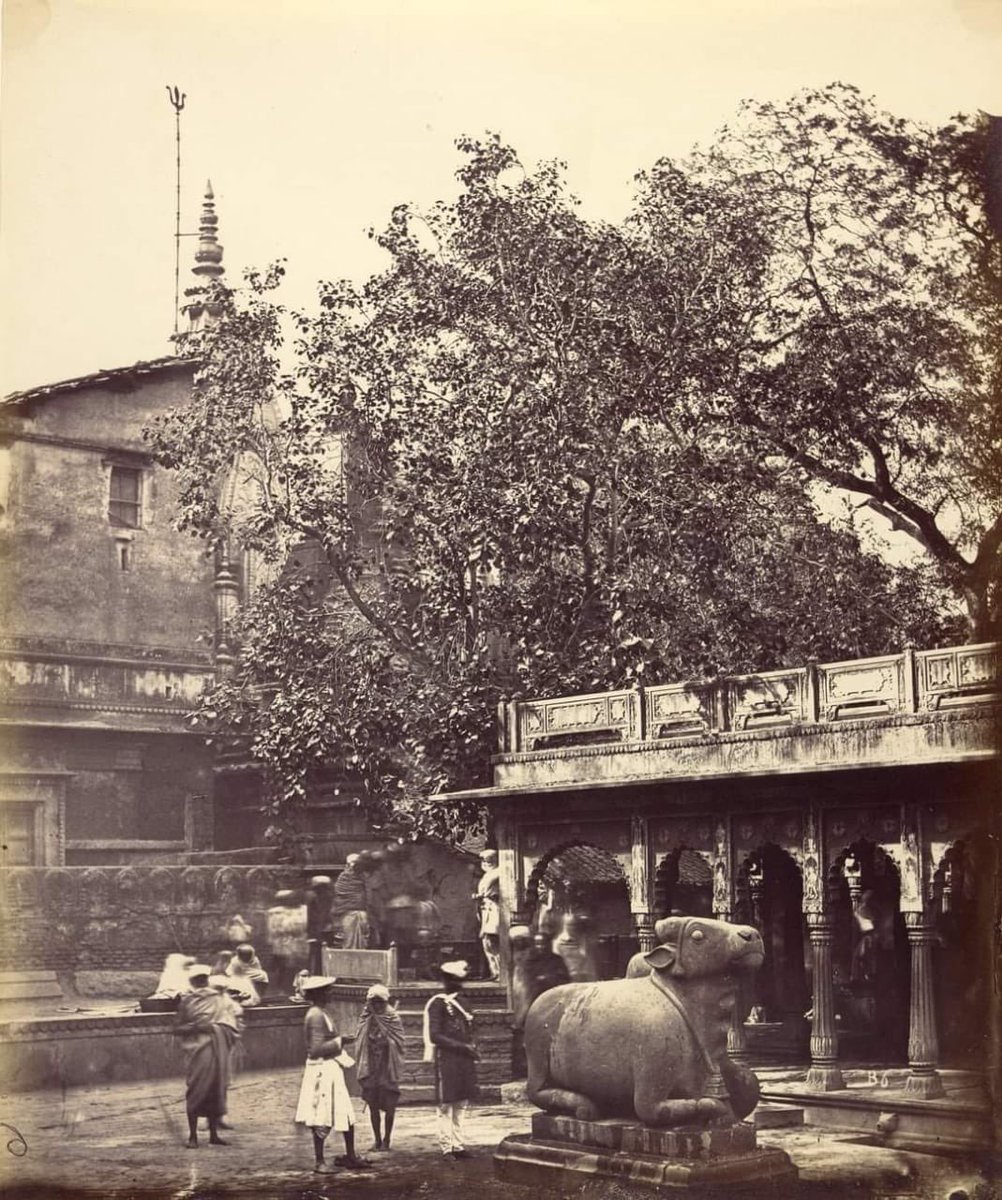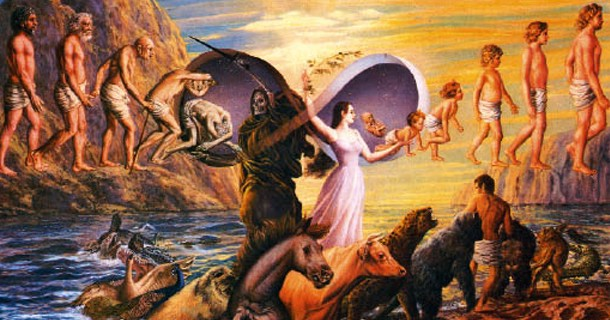
Why is #Kashi so significant to Hindus? Part-2 #Thread
"Significance of Tirtha Yatra"
Kashi is referenced in the Puranas and Mahatmya Granthas as a Tirtha Khestra.
मरणं मंगलं यत्र विभूतिश्च विभूषणम्।
कौपीनं यत्र कौशेयं सा काशी केन मीयते।।
Pilgrimage sites of 🇮🇳
"Significance of Tirtha Yatra"
Kashi is referenced in the Puranas and Mahatmya Granthas as a Tirtha Khestra.
मरणं मंगलं यत्र विभूतिश्च विभूषणम्।
कौपीनं यत्र कौशेयं सा काशी केन मीयते।।
Pilgrimage sites of 🇮🇳

Although pilgrimages are not mentioned directly in Vedic literature (about 2000-500 B.C.), they were regarded an important aspect of spiritual fulfilment
(Aitareya Brahmana)
(Aitareya Brahmana)

In Vedic literature, the Sanskrit term yatra meant "travel" rather than "pilgrimage," but yatra was accepted as meaning "pilgrimage" in Puranic literature (500 B.C. - A.D. 700). 

Yatra, as a symbol of union and merging, has become an important feature of all Hindu religious practices in some way. Movement is conveyed at the local level through parikrama (circumambulation), which has evolved into an invariable primary rite during pilgrimage. 

Puranic literature has extensive information about sacred sites and pilgrimages. The Mahabharata is thought to be the first Hindu literature to describe sacred sites in detail. It clearly shows that pilgrimages (Trtha-yatras) are superior to sacrifice.
The Matsya Purana lists several sacred sites, along with details of connected rituals, gestures, dreams, and fortunate signs and symbols. Other Puranas depict sacred sites and pilgrimages in the same way.
The Puranas divide pilgrimages into 4 categories:
1. Putreshana (want for a son)
2. Vitteshana (desire for wealth)
3. Mukteshana (desire for emancipation or atonement from sin)
4. Lokeshana (desire for atonement from sin) (desire for worldly gain).
1. Putreshana (want for a son)
2. Vitteshana (desire for wealth)
3. Mukteshana (desire for emancipation or atonement from sin)
4. Lokeshana (desire for atonement from sin) (desire for worldly gain).
However, all pilgrimage sites provide the benefits of general purification and bliss. In most situations, pilgrimage is undertaken as an act of devotion to a deity, with the ultimate goal of achieving happy fulfilment through the fulfilment of a specific wish.
According to the Bhavisya Purana, a person taking a bath anywhere in the Gaga can gain merit, but that merit multiplies tenfold when the river contacts the Vindhyachal range, one hundredfold as it flows west, and one thousand fold where it flows north, as it does in Varanasi.
According to the Kashi Khanda, there are seven sacred towns (puris) that bestow salvation: Ayodhya (Rama's capital), Mathur (Krishna's birthplace), Kanchi (Vishnu's sacred city), Dwaraka (Krishna's capital), and Kashi/Varanasi (the city of Shiva)
According to common belief, those who die in Kashi will be immediately liberated, whereas those who die in any of the other six cities will only be indirectly liberated because they would be reborn in Kashi.
Varanasi is a sacred site where spatial patterns and behavior are significant. There are 96 unique tirthas on the 84 Ghats (stairways) along the Ganga's banks, for example.
The Panchatirthas are a group of 5 of these 96.
The praiseworthy glories of these 5 Ghats are mentioned in Matsya Purana.
The praiseworthy glories of these 5 Ghats are mentioned in Matsya Purana.
"There, O Prince, is the very excellent 5 Tirthas, the Panchaitirthas; having bathed in which a person shall never again be born... rather he becomes the 5 faced Shiva in Kashi," says the Kashi Khanda of Skanda Purana, a work from the early 14th century.
Pilgrims perform ceremonies by going from Asi Ghat to Dashshvamedha, Idi Keshava, Panchaganga, and finally Manikarnika Ghat in that order. Pilgrims bathe and worship major deities at each of these Ghats .
They pay tribute to the patron god of the city, Shiva in the form of Vishvantha, and other deities around after taking the last ritual bath at Manikarnika Ghat.
Spatial transposition, or the re-establishment of religious patterns at a different site and size from the original, is one of the elements impacting the organisation of Divine places within Varanasi.
"All the sacred pilgrimage destinations are in Varanasi, and if one remains in Varanasi, there is no need to go anywhere else on pilgrimages," it has been said.
Varanasi is a microcosm of India's spiritual geography. The 6 other Puris (sacred cities) are re-created in Varanasi's sacred topography by spatial transposition. As a result, pilgrims can worship at the 7 Puris while moving around this sacred city
Likewise, all 12 light-reflecting Jyotirlingas, which are distributed throughout India, are transposed to Varanasi. Specifically, Someshvara (originally Somnath, Gujarat) appears at Man Mandir Ghat in Varanasi; MallikƗrjuna (Hyderabad) at TripurƗntakeshvara;
MahƗkƗleshvara (Ujjain) at BriddhakƗla; OmkƗreshvara (Mandhata) at Omkareshvara; VaidyanƗtha (Deoghar) at Kamachha; Bhīmashankara (Pune) at Bhimeshvara; RƗmeshvara (Rameshvaram) at Ramkund; NƗgeshvara (near Dvaraka) at Bhonsala Ghat;
Tryambakeshvara (Nasik) at Baradeo; KedƗreshvara (Chamoli) at KedƗra Ghat; Ghushmeshvara (Ellora) near Batuka Bhaivara; and Vishveshvara, already in Varanasi at #Gyanvapi.
The portrayal of the 4 Dhams (abodes of gods) located in India's 4 cardinal directions is another example of spatial transposition. Badrinath's Northern Dham has a Varanasi equivalent near Trilochana Ghat. 

The Man Mandir Ghat replicates Rameshvaram's southernmost sacred location, while Shankhudhara replicates Dwaraka's Western Dham. Jagannath Puri, in the east, is 4th. Puri has been transformed into a compound at Assi Ghat, where a big sandalwood Jagannath statue has been placed.
Stay tuned for Part 3...👇
1. Antargraha Yatra
2. Avimukta Yatra
3. Nagara Pradaksina
4. Panchakrosi Yatra
ॐ नमः शिवाय
#हरहरमहादेव 🙏
Part 1 threadreaderapp.com/thread/1528733…

1. Antargraha Yatra
2. Avimukta Yatra
3. Nagara Pradaksina
4. Panchakrosi Yatra
ॐ नमः शिवाय
#हरहरमहादेव 🙏
Part 1 threadreaderapp.com/thread/1528733…


@threadreaderapp unroll
@GSNarayan1960
@DrUgrabhatah
@AjitsinhJagirda
@Anandi_sanatani
@neerangautam
@chimnibai
@_ankahi
@SoniaGurnani19
@ArunDeshpande20
@nrajabpcl
@SortedEagle
@VeerannaAthani
@bs_hariharan3
@SanskarBarot
@swetashandilya
@keeranl
@LoveBharatvarsh
@DrUgrabhatah
@AjitsinhJagirda
@Anandi_sanatani
@neerangautam
@chimnibai
@_ankahi
@SoniaGurnani19
@ArunDeshpande20
@nrajabpcl
@SortedEagle
@VeerannaAthani
@bs_hariharan3
@SanskarBarot
@swetashandilya
@keeranl
@LoveBharatvarsh
• • •
Missing some Tweet in this thread? You can try to
force a refresh


















